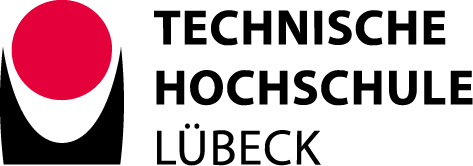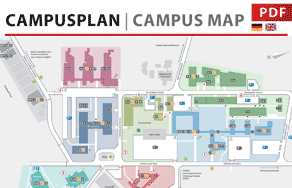Inhalte von Videoplattformen und Social Media Plattformen werden standardmäßig blockiert. Wenn Cookies von externen Medien akzeptiert werden, bedarf der Zugriff auf diese Inhalte keiner manuellen Zustimmung mehr.
OpenStreetMap
Damit die Karten von OpenStreetMap auf einer Website angezeigt werden können, wird die IP-Adresse des Users auf einem Server von OpenStreetMap gespeichert sowie ein Cookie gesetzt.
| Anbieter: | openstreetmap.org |
YouTube Videos
Eine direkte Verbindung zu den Servern von YouTube wird erst hergestellt, wenn Sie die Videos selbstständig aktivieren (Einwilligung nach Art. 6 Abs. 1 lit. a DSGVO). Nach der Aktivierung wird YouTube Ihre IP-Adresse speichern. Mit dem Laden der Videos akzeptieren Sie die Datenschutzerklärung von Google.
| Anbieter: | YouTube / Google LLC |
| Datenschutzlink: | https://policies.google.com/privacy?hl=de |
Google Maps
Eine direkte Verbindung zu den Servern von Google wird erst hergestellt, wenn Sie Google Maps selbstständig aktivieren (Einwilligung nach Art. 6 Abs. 1 lit. a DSGVO). Nach der Aktivierung wird Google Maps Ihre IP-Adresse speichern. Mit dem Laden der Karte akzeptieren Sie die Datenschutzerklärung von Google.
| Anbieter: | Google LLC |
| Datenschutzlink: | https://policies.google.com/privacy?hl=de |
SoundCloud
Eine direkte Verbindung zu den Servern von SoundCloud wird erst hergestellt, wenn Sie die Elemente selbstständig aktivieren (Einwilligung nach Art. 6 Abs. 1 lit. a DSGVO). Nach der Aktivierung wird SoundCloud Ihre IP-Adresse speichern. Mit dem Laden akzeptieren Sie die Datenschutzerklärung von SoundCloud.
| Anbieter: | SoundCloud Limited |
| Datenschutzlink: | https://soundcloud.com/pages/privacy |
Google Calendar
Eine direkte Verbindung zu den Servern von Google wird erst hergestellt, wenn Sie Google Calendar selbstständig aktivieren (Einwilligung nach Art. 6 Abs. 1 lit. a DSGVO). Nach der Aktivierung wird Google Calendar Ihre IP-Adresse speichern. Mit dem Laden des Kalenders akzeptieren Sie die Datenschutzerklärung von Google.
| Anbieter: | Google LLC |
| Datenschutzlink: | https://policies.google.com/privacy?hl=de |
| Host: | google.com |
Öffentlichen Ausschreibungen der TH
Eine direkte Verbindung zu den Servern von "Deutsches Ausschreibungsblatt" wird erst hergestellt, wenn Sie den externen Inhalt aktivieren (Einwilligung nach Art. 6 Abs. 1 lit. a DSGVO). Nach der Aktivierung werden diese Server Ihre IP-Adresse speichern. Mit dem Laden des externen Inhalts akzeptieren Sie die Datenschutzerklärung des Anbieters.
| Anbieter: | deutsches-ausschreibungsblatt.de |
| Datenschutzlink: | https://www.deutsches-ausschreibungsblatt.de/datenschutz |
| Host: | https://www.deutsches-ausschreibungsblatt.de/ |
BITE Bewerbermanager
Eine direkte Verbindung zu den Servern von BITE wird erst hergestellt, wenn Sie den externen Inhalt aktivieren (Einwilligung nach Art. 6 Abs. 1 lit. a DSGVO). Nach der Aktivierung werden diese Server Ihre IP-Adresse speichern. Mit dem Laden des externen Inhalts akzeptieren Sie die Datenschutzerklärung des Anbieters.
| Anbieter: | b-ite.de |
| Datenschutzlink: | https://www.b-ite.de/legal-notice.html |
Podigee Podcast-Hosting
Eine direkte Verbindung zu den Servern von Podigee wird erst hergestellt, wenn Sie den externen Inhalt aktivieren (Einwilligung nach Art. 6 Abs. 1 lit. a DSGVO). Nach der Aktivierung werden diese Server Ihre IP-Adresse speichern. Mit dem Laden des externen Inhalts akzeptieren Sie die Datenschutzerklärung des Anbieters.
| Anbieter: | Podigee GmbH |
| Datenschutzlink: | https://www.podigee.com/de/ueber-uns/datenschutz |
| Host: | https://www.podigee.com/ |
360° Rundgang
Eine direkte Verbindung zu den Servern von 3D Vista wird erst hergestellt, wenn Sie den externen Inhalt aktivieren (Einwilligung nach Art. 6 Abs. 1 lit. a DSGVO). Nach der Aktivierung werden diese Server Ihre IP-Adresse speichern. Mit dem Laden des externen Inhalts akzeptieren Sie die Datenschutzerklärung des Anbieters.
| Anbieter: | 3D Vista |
| Datenschutzlink: | https://www.3dvista.com/de/privacy_policy/ |
| Host: | https://www.3dvista.com/ |
rapidmail Newsletter-Tool
Eine direkte Verbindung zu den Servern von rapidmail wird erst hergestellt, wenn Sie den externen Inhalt aktivieren (Einwilligung nach Art. 6 Abs. 1 lit. a DSGVO). Nach der Aktivierung werden diese Server Ihre IP-Adresse speichern. Mit dem Laden des externen Inhalts akzeptieren Sie die Datenschutzerklärung des Anbieters.
| Anbieter: | rapidmail |
| Datenschutzlink: | https://www.rapidmail.de/datenschutz |
| Host: | https://www.rapidmail.de/ |
Userlike
Eine direkte Verbindung zu den Servern von Userlike wird erst hergestellt, wenn Sie den externen Inhalt aktivieren (Einwilligung nach Art. 6 Abs. 1 lit. a DSGVO). Nach der Aktivierung werden diese Server Ihre IP-Adresse speichern. Mit dem Laden des externen Inhalts akzeptieren Sie die Datenschutzerklärung des Anbieters.
| Anbieter: | Userlike |
| Datenschutzlink: | https://www.userlike.com/de/terms#privacy-policy |
| Host: | https://www.userlike.com/ |
Guestoo
Gäste- & Teilnehmer-Management für Events & Veranstaltungen
Eine direkte Verbindung zu den Servern von "guestoo" wird erst hergestellt, wenn Sie den externen Inhalt aktivieren (Einwilligung nach Art. 6 Abs. 1 lit. a DSGVO). Nach der Aktivierung werden diese Server Ihre IP-Adresse speichern. Mit dem Laden des externen Inhalts akzeptieren Sie die Datenschutzerklärung des Anbieters.
| Anbieter: | guestoo.de |
| Datenschutzlink: | https://www.guestoo.de/datenschutzerklaerung |
| Host: | https://www.guestoo.de/ |

